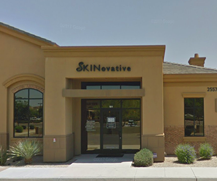Nonsurgical treatment highly effective for pain
What are varicoceles?
A varicocele is a varicose vein of the testicle and scrotum. Varicoceles can cause pain, testicular atrophy (shrinkage) or fertility problems.
Veins contain one-way valves that allow blood to flow from the testicles and scrotum back to the heart. Just like varicose veins in the leg, when the veins of the scrotum are damaged or blocked, the blood pools and enlarges the veins, causing varicoceles.
Roughly 10 percent of men have varicoceles, and every year as many as 70,000 to 80,000 men in America undergo surgical treatment for varicocele. They are more common in men aged 15 to 35 and are most often seen on the left side of the scrotum. They make scrotum looks or feels like a “bag of worms.”
Symptoms
Varicoceles usually develop slowly. And there may or may not be symptoms. However, advanced varicoceles may present with:
- Enlarged, twisted veins in the scrotum (like a bag of worms)
- Swelling of the scrotum
- Aching pain during long periods of standing or sitting
- Atrophy (shrinking) of the testes (male reproductive organ) within the scrotum
- Infertility
Varicocele embolization
Catheter-directed embolization is a nonsurgical outpatient treatment for varicoceles.
It uses imaging to guide catheters (small, thin tubes) inserted into a tiny nick in the skin at the groin to locate the varicose testicular vein. The varicocele is then sealed off and blood flow is redirected to healthy veins. The patient is under local anesthesia, relaxed and pain-free.
Unlike with open surgical ligation (tying off), recovery time for embolization is one to two days compared to two to three weeks for surgery. Also, with embolization there’s no surgical incision in the scrotal area, whereas surgery requires cutting in the lower abdomen to tie off the abnormal vein.
In a study involving 918 patients aged 9 to 65 years and spanning a period of seven years, only 19 had to be retreated during the follow-up period (1999-2006). The results showed that nonsurgical embolization is 98 percent effective and offers a lower recurrence rate and much quicker recovery than surgery for the treatment of varicoceles.

